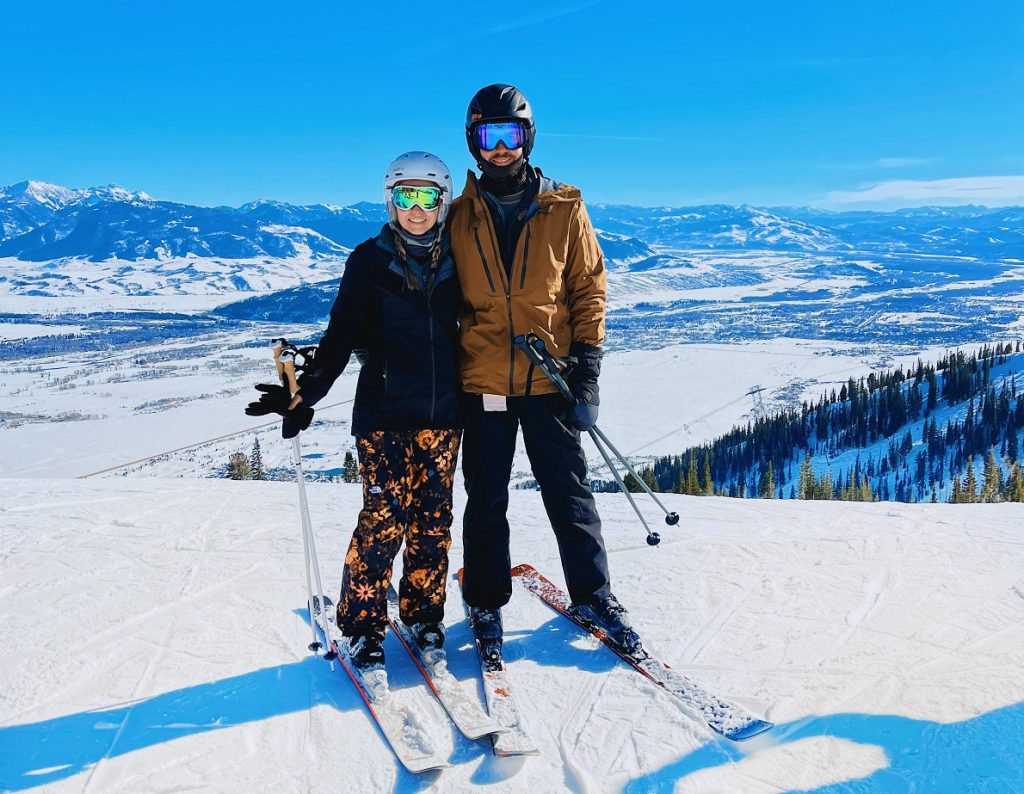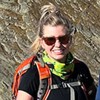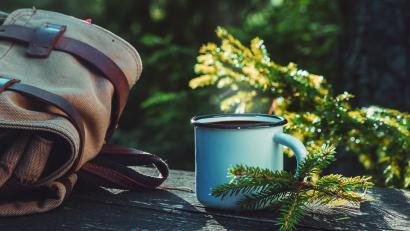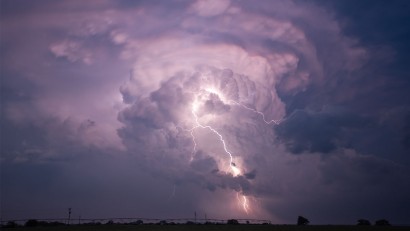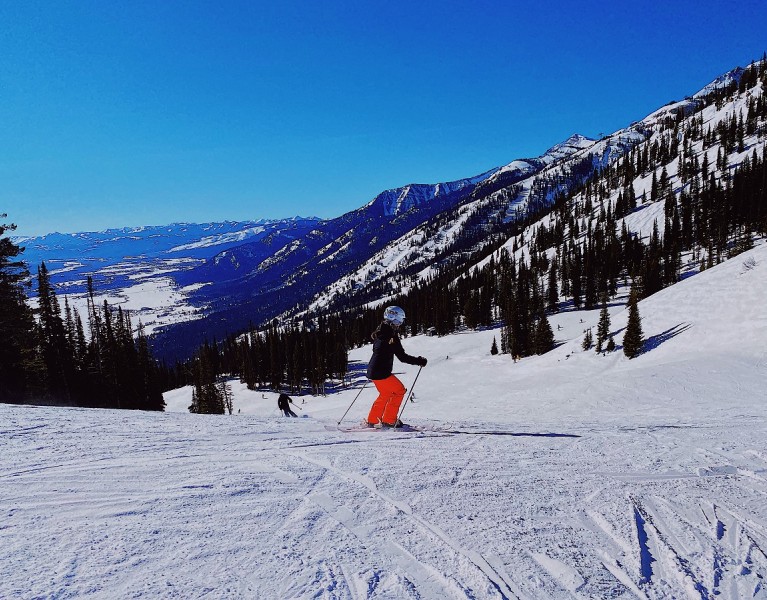
Intermediate Skier's Guide to Jackson Hole
Table of Contents [Show]
Jackson Hole is one of the most famous ski resorts in the world for good reason. Its expert terrain is the stuff of legend, with Corbet’s Couloir, a soul-shaking double black drop chute at the resort’s summit, playing host to one of the most insane freeride competitions you’ll ever see. Advanced skiers around the globe practically salivate at the thought of a powder day at Jackson Hole Mountain Resort (JHMR), but if you’re like me, you’re not quite ready to go full send down the steepest terrain in the country. When my husband and I visited JHMR in February, I was curious to see how I would fare on the resort’s storied slopes.
First, a little bit about me: I was born and raised in Florida, so snow is not exactly in my blood. I took up skiing as an adult at my husband’s urging, and I’ve only had one professional lesson. We’ve skied around the country, including mountains in North Carolina, West Virginia, Utah, California, Nevada, and Wyoming, so I have a good sense of the differences between various resorts. I consider myself a true intermediate and a fairly cautious person; my goal on the slopes is to enjoy the scenery and get some exercise without breaking a bone.
Every East Coast skier has heard the refrain that an East Coast black diamond is more like a Western blue run, and I was in a unique position to find out. My husband and I had just come off a ski trip to West Virginia where I spent the vast majority of my time on black runs and skied pretty confidently. So, our trip to JHMR was well-timed for an accurate valuation of Jackson Hole’s intermediate offerings.
Hitting the Hill
We warmed up by hitting the resort’s limited green runs first to shake off the dust. I was surprised to discover that JHMR’s green runs were arguably the easiest green runs I’ve ever skied anywhere, and that’s saying something. For beginners looking to get started on the slopes, the green runs are a great place to build your confidence.
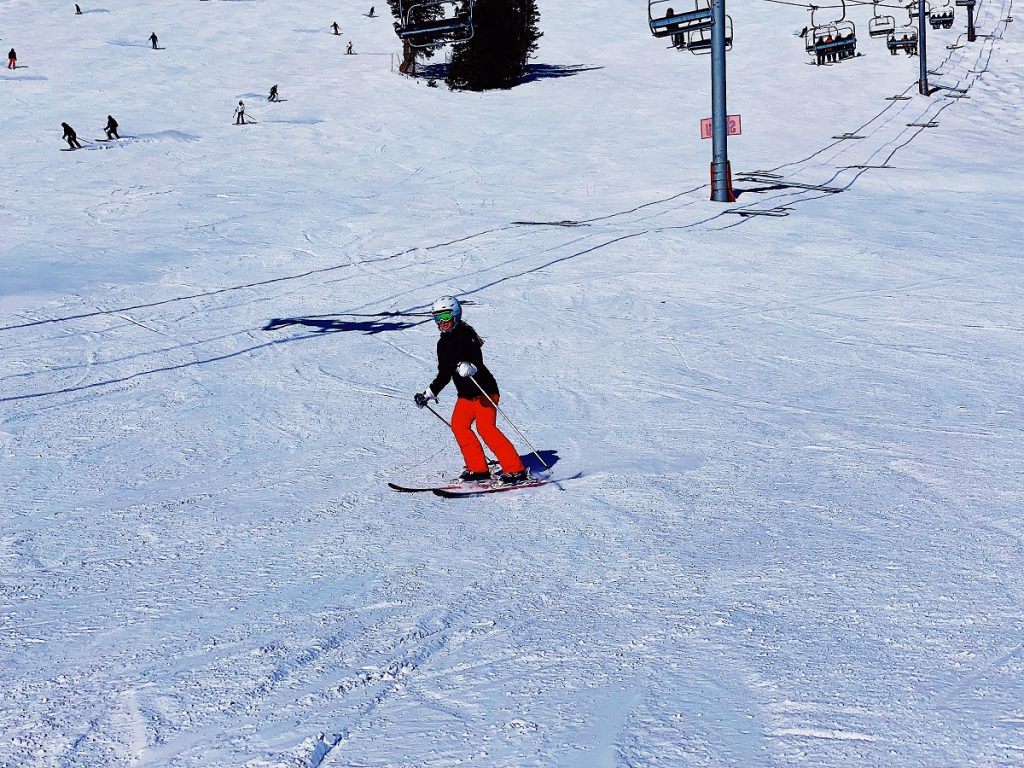
Next, it was on to some blue runs. Jackson Hole has blue and double blue runs, with double blue runs being more advanced. The resort has made a serious push to expand its intermediate offerings in recent years, so there are certainly more available than there was a decade ago. Intermediate runs at JHMR generally fall into one of two categories: cat tracks, or narrow, winding runs that are used to traverse the mountain and are comparatively “flat;” or long, steeper runs, the majority of which are groomed.
We took the Sweetwater Gondola and hopped on a short section of the South Pass Traverse to get warmed up. Traverses are long, narrow runs that are a great way to see the mountain and take in the scenery if you’re confident in your turns and aren’t looking to build up too much speed. If you prefer a lot of space to turn and are uncomfortable passing other people, you might find these runs intimidating.
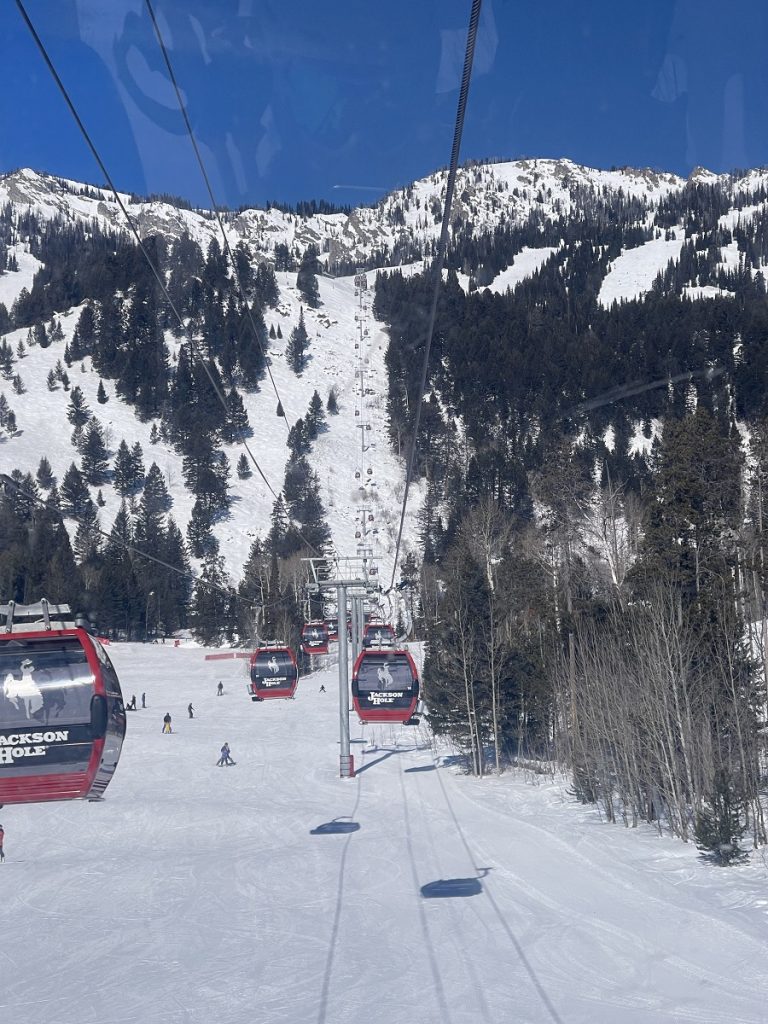
Next, we headed up the Teton Quad Chair down the steep and intimidating Crags Run. Although rated as blue, I’d put Crags Run up there on the list of steepest runs I’ve done recently, and I wasn’t mentally prepared. Fortunately, the run is super wide and accommodating, so I was able to pick my way down the mountain slowly while staying out of the way. From there, we intersected the double blue Moran and continued down the mountain.
Over the course of our three skiing days, my husband and I hit just about every blue run on the mountain and also tacked on some double blues for good measure. Our favorites included Amphitheater, Gros Ventre, Werner, Easy Does it, and Lower Sundance. One of the best things about JHMR is the sheer length of the runs. Compared to other resorts, you spend much less time on the lifts and get in much more skiing. My longest run was over four miles long! On the other hand, if you’re not in great skiing shape, the long, comparatively steep runs can be a bit challenging to manage as the day wears on.
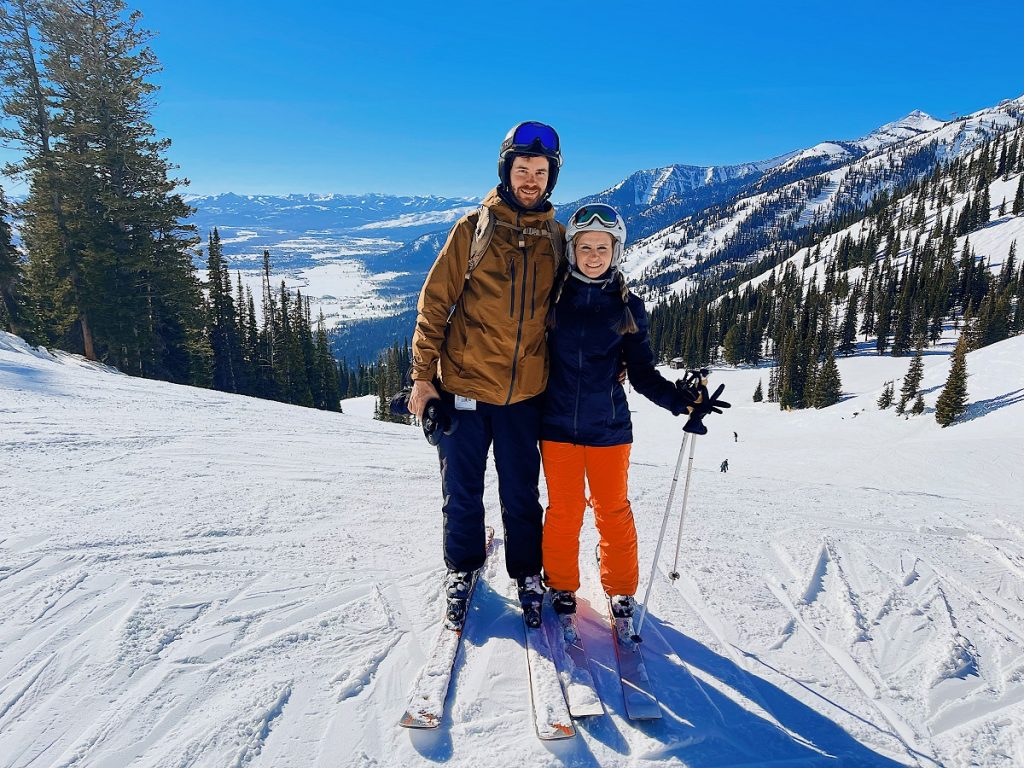
Plan Your Route
One of the things I found challenging about JHMR was the inconsistencies between the trail map online, the trail maps on the lifts, the trail maps posted at the top of each lift, and the signage on the mountain. It appears that trails may be blue some years and double blue in others, and there’s a lot of inconsistency. This made it challenging to pick our route, especially when we got tired and weren't in the mood for the steeper stuff. If you want to stick solely to the blues, I’d recommend speaking to a Mountain Host to make sure you’re up to date on the current status of each run.
You might be wondering if I ever ventured on to the black runs, and to that, I will give a resounding no. My skiing isn’t where it needs to be to conquer a JHMR black run, and I agree that there is a difference between East Coast black runs and JHMR black runs. However, there was plenty of terrain available to keep us busy on our three full skiing days. We both vowed to come back as we improve our skiing, so who knows? Maybe one day you’ll find me picking my way down Corbet’s after all.
Packing List
Don’t let your weather app fool you: temperatures on the mountain usually feel warmer than you think! Dress in layers so you don’t get too hot. I layered my KÜHL AKKOMPLICE base layers beneath my favorite KÜHL SPYFIRE jacket and DEFLEKTER hybrid shell.
- Waterproof shell or ski jacket
- Down jacket
- Base layer pants and shirt
- Ski pants
- Sweaters for layering
- Ski socks
- Skull cap or beanie
- Neck gaiter
- Waterproof gloves or mittens
- Parka for evening
- Ski gear, including goggles and helmet
- Sunscreen – the high elevation and reflection off the snow make this a must have!
